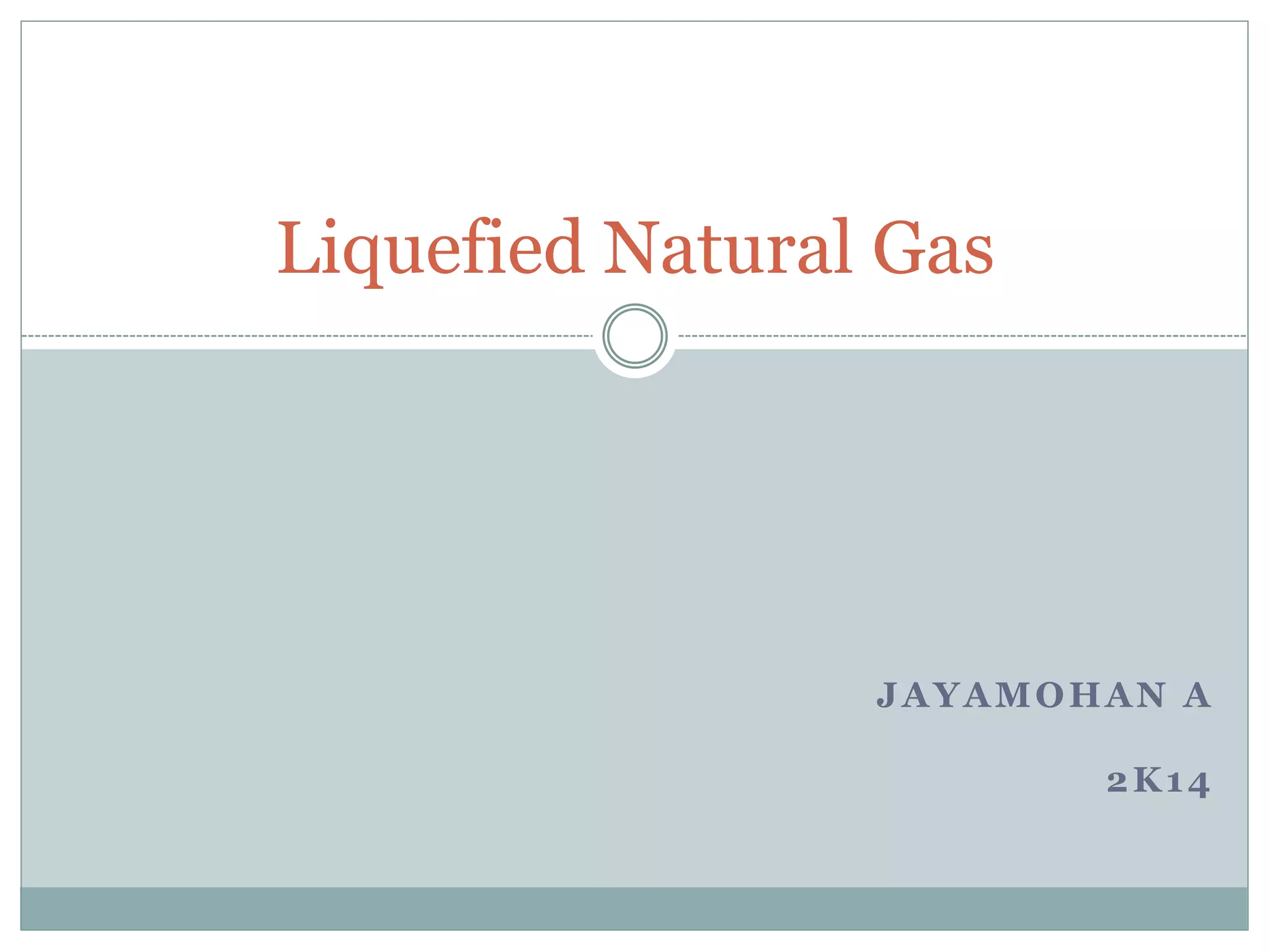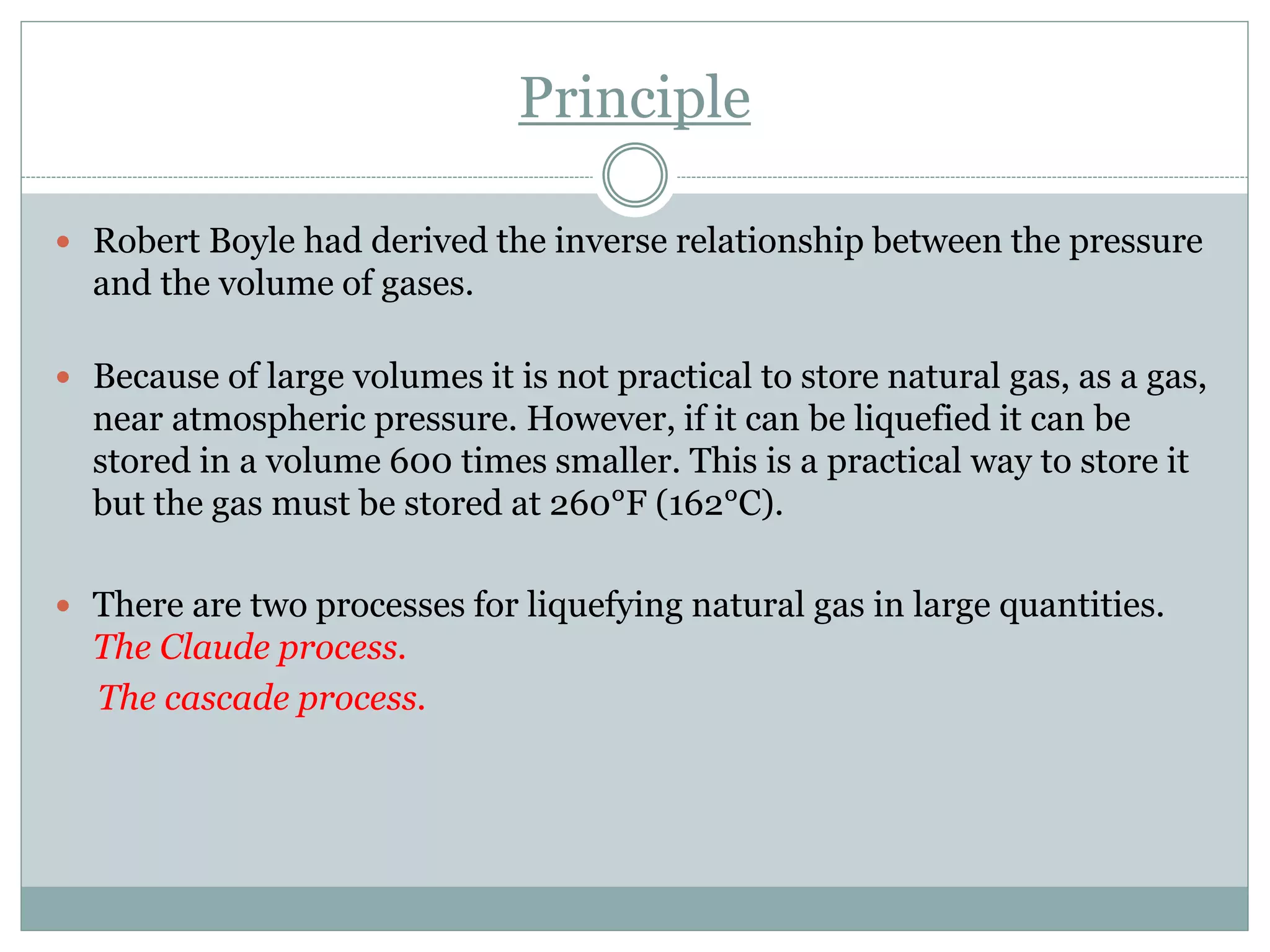Liquefied natural gas (LNG) is created by cooling natural gas to liquid form so that it takes up 1/600th the volume, making it more efficient for long-distance transport where pipelines do not exist. The document discusses how LNG is extracted and purified before being cooled and liquefied using processes like the Claude process or cascade process. LNG is then stored in specially designed, double-hulled ships and tanks before being regasified and distributed through pipelines, providing a safer and more environmentally friendly way to transport natural gas.






